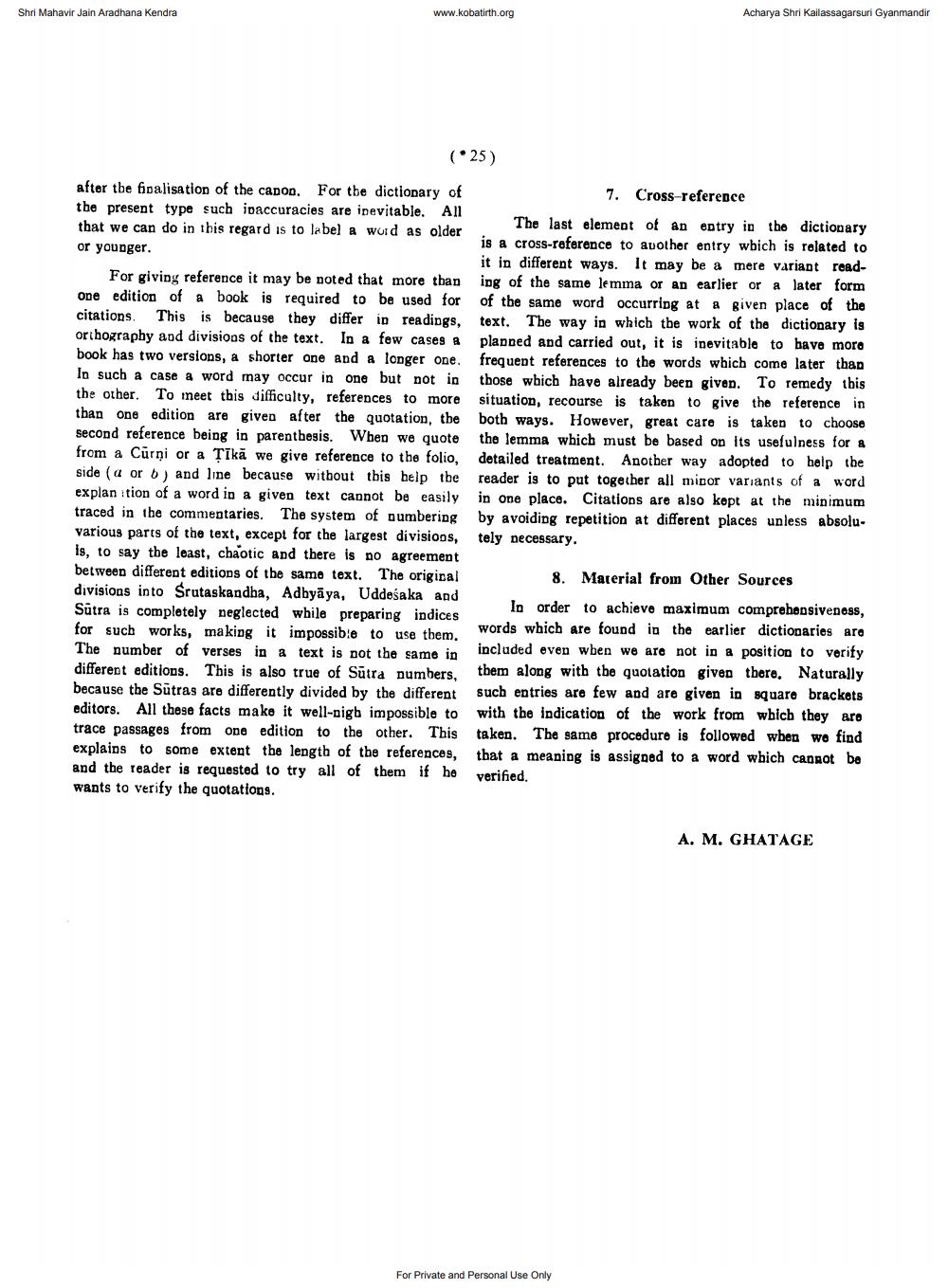________________
Shri Mahavir Jain Aradhana Kendra
www.kobatirth.org
(25)
after the finalisation of the canon. For the dictionary of the present type such inaccuracies are inevitable. All that we can do in this regard is to label a word as older or younger.
For giving reference it may be noted that more than one edition of a book is required to be used for citations. This is because they differ in readings, orthography and divisions of the text. In a few cases a book has two versions, a shorter one and a longer one. In such a case a word may occur in one but not in the other. To meet this difficulty, references to more than one edition are given after the quotation, the second reference being in parenthesis. When we quote from a Curni or a Tika we give reference to the folio, side (a or b) and line because without this help the explanation of a word in a given text cannot be easily. traced in the commentaries. The system of numbering various parts of the text, except for the largest divisions, is, to say the least, chaotic and there is no agreement between different editions of the same text. The original divisions into Śrutaskandha, Adhyaya, Uddeśaka and Sutra is completely neglected while preparing indices for such works, making it impossible to use them. The number of verses in a text is not the same in different editions. This is also true of Sutra numbers, because the Sutras are differently divided by the different editors. All these facts make it well-nigh impossible to trace passages from one edition to the other. This explains to some extent the length of the references, and the reader is requested to try all of them if he wants to verify the quotations.
Acharya Shri Kailassagarsuri Gyanmandir
7. Cross-reference
The last element of an entry in the dictionary is a cross-reference to auother entry which is related to it in different ways. It may be a mere variant reading of the same lemma or an earlier or a later form of the same word occurring at a given place of the text. The way in which the work of the dictionary is planned and carried out, it is inevitable to have more frequent references to the words which come later than those which have already been given. To remedy this situation, recourse is taken to give the reference in both ways. However, great care is taken to choose the lemma which must be based on its usefulness for a detailed treatment. Another way adopted to help the reader is to put together all minor variants of a word in one place. Citations are also kept at the minimum by avoiding repetition at different places unless absolutely necessary.
8. Material from Other Sources
In order to achieve maximum comprehensiveness, words which are found in the earlier dictionaries are included even when we are not in a position to verify them along with the quotation given there. Naturally such entries are few and are given in square brackets with the indication of the work from which they are taken. The same procedure is followed when we find that a meaning is assigned to a word which cannot be verified.
For Private and Personal Use Only
A. M. GHATAGE




